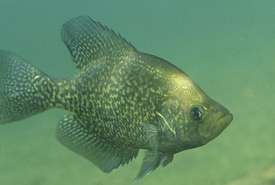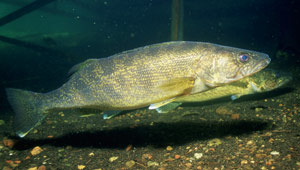Something’s Fishy: Back to school

Black crappie (Photo by Eric Engbretson, USFWS)
September is a time for new beginnings. For many across Canada, a new school year has begun. Some may have just started post-secondary school, thousands of kilometres from their parents, while others might be attending school for the very first time.
There are many different types of schools to attend, but there are also those schools that lie deep under the water’s surface that don’t offer admission to humans.
Fish schools are common throughout Canada, and there are many Canadian fishes that team up to brave the fresh waters together. Shoaling fish stay together for social reasons. If a group is moving in the same direction, then they are schooling. Shoaling behaviour can include fish grouping together against predators for foraging and mating. Fish tend to form groups with healthy fish of similar size and appearance and often of the same species.
So, when you’re done packing your bags or packing lunches for your little ones as they head off to school, learn about some schooling species below.
Related blog posts
Walleye

Walleye (Photo by Eric Engbretson, USFWS)
When the sun comes out and hits the water, groups of walleyes travel together in schools to seek out shadier, cooler parts of the water. Schools of walleye are usually comprised of fish of the same size and age. They also travel in schools during migration and to spawn, including to waters within the Nature Conservancy of Canada’s Minesing Wetlands. Their schooling tendencies are a reason why this fish is popular among anglers, as it’s easier to catch more than one at a time.
Black crappie
This species of sunfish is one of many in its family that travel in schools. The term “sunfish” (sometimes known as “panfish”) is a term used to describe either a large group of freshwater fish that is native to North America or a large, long-bodied marine fish from warm saltwater bodies (known more specifically as ocean sunfish). Black crappies travel in schools in the spring and fall.
Lake whitefish
This species tends to group together in the summer, around late June and early July. When schooling, they travel in a tight formation, swimming at depths of 15 to 18 metres. As they begin to spawn in the fall, the group travels deeper and moves consistently for around three weeks.
After spawning season in late September, lake whitefish continue to school but move to shallower waters. They remain here — around nine to 11 metres under the water’s surface — into and throughout the winter.


